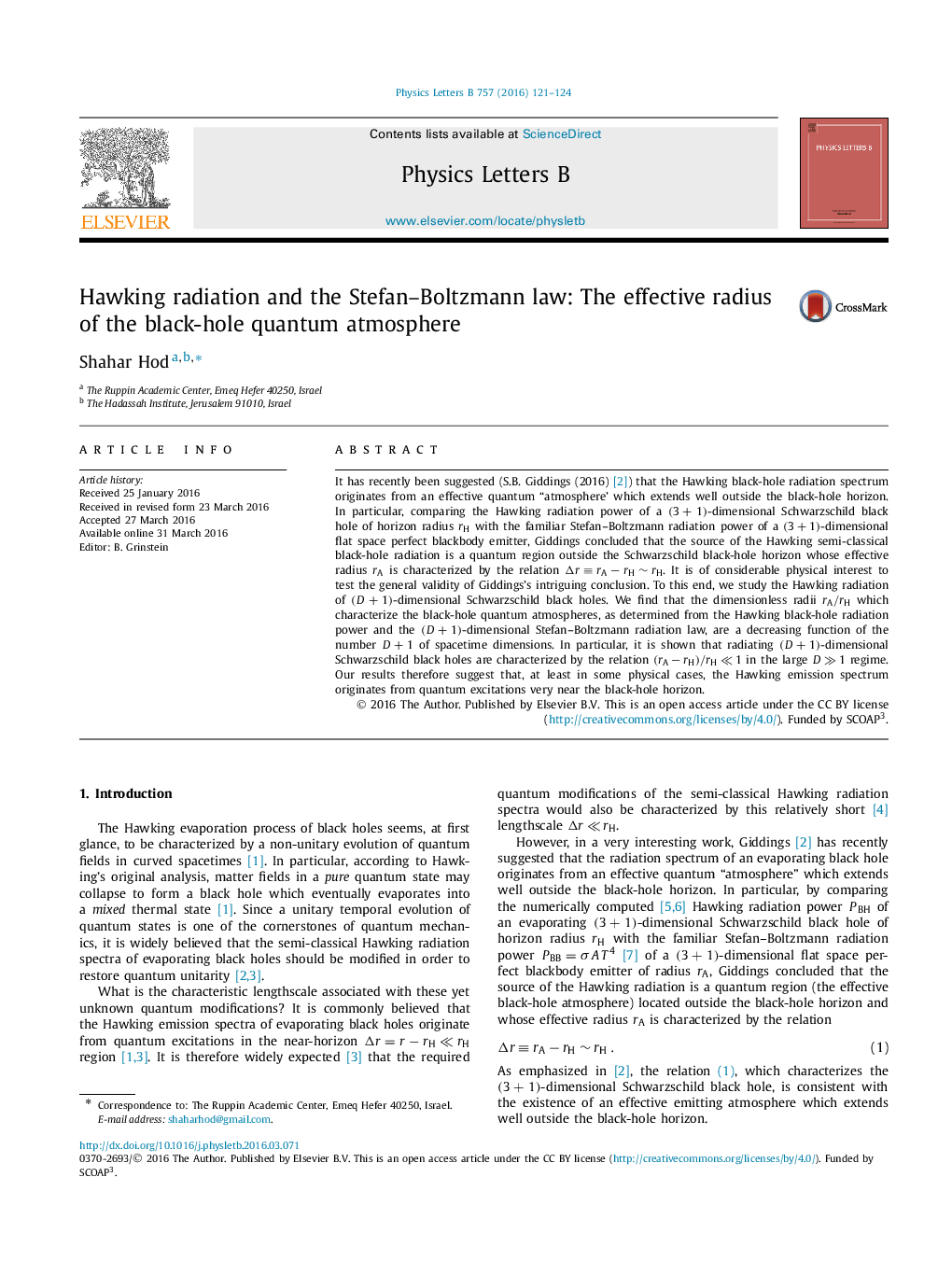| Article ID | Journal | Published Year | Pages | File Type |
|---|---|---|---|---|
| 1848716 | Physics Letters B | 2016 | 4 Pages |
It has recently been suggested (S.B. Giddings (2016) [2]) that the Hawking black-hole radiation spectrum originates from an effective quantum “atmosphere' which extends well outside the black-hole horizon. In particular, comparing the Hawking radiation power of a (3+1)(3+1)-dimensional Schwarzschild black hole of horizon radius rHrH with the familiar Stefan–Boltzmann radiation power of a (3+1)(3+1)-dimensional flat space perfect blackbody emitter, Giddings concluded that the source of the Hawking semi-classical black-hole radiation is a quantum region outside the Schwarzschild black-hole horizon whose effective radius rArA is characterized by the relation Δr≡rA−rH∼rHΔr≡rA−rH∼rH. It is of considerable physical interest to test the general validity of Giddings's intriguing conclusion. To this end, we study the Hawking radiation of (D+1)(D+1)-dimensional Schwarzschild black holes. We find that the dimensionless radii rA/rHrA/rH which characterize the black-hole quantum atmospheres, as determined from the Hawking black-hole radiation power and the (D+1)(D+1)-dimensional Stefan–Boltzmann radiation law, are a decreasing function of the number D+1D+1 of spacetime dimensions. In particular, it is shown that radiating (D+1)(D+1)-dimensional Schwarzschild black holes are characterized by the relation (rA−rH)/rH≪1(rA−rH)/rH≪1 in the large D≫1D≫1 regime. Our results therefore suggest that, at least in some physical cases, the Hawking emission spectrum originates from quantum excitations very near the black-hole horizon.
